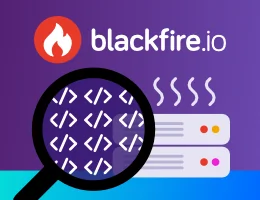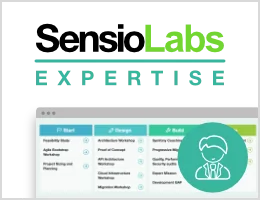How to Restrict Firewalls to a Request
When using the Security component, firewalls will decide whether they handle a request based on the result of a request matcher: the first firewall matching the request will handle it.
The last firewall can be configured without any matcher to handle every incoming request.
Restricting by Configuration
Most of the time you don't need to create matchers yourself as Symfony can do it for you based on the firewall configuration.
Note
You can use any of the following restrictions individually or mix them together to get your desired firewall configuration.
Restricting by Path
This is the default restriction and restricts a firewall to only be initialized
if the request path matches the configured pattern.
1 2 3 4 5 6 7 8
# config/packages/security.yaml
# ...
security:
firewalls:
secured_area:
pattern: ^/admin
# ...1 2 3 4 5 6 7 8 9 10 11 12 13 14 15 16 17
<!-- config/packages/security.xml -->
<?xml version="1.0" encoding="UTF-8" ?>
<srv:container xmlns="http://symfony.com/schema/dic/security"
xmlns:xsi="http://www.w3.org/2001/XMLSchema-instance"
xmlns:srv="http://symfony.com/schema/dic/services"
xsi:schemaLocation="http://symfony.com/schema/dic/services
https://symfony.com/schema/dic/services/services-1.0.xsd
http://symfony.com/schema/dic/security
https://symfony.com/schema/dic/security/security-1.0.xsd">
<config>
<!-- ... -->
<firewall name="secured_area" pattern="^/admin">
<!-- ... -->
</firewall>
</config>
</srv:container>1 2 3 4 5 6 7 8 9 10 11
// config/packages/security.php
use Symfony\Config\SecurityConfig;
return static function (SecurityConfig $security): void {
// ....
$security->firewall('secured_area')
->pattern('^/admin')
// ...
;
};The pattern is a regular expression. In this example, the firewall will only be
activated if the path starts (due to the ^ regex character) with /admin. If
the path does not match this pattern, the firewall will not be activated and subsequent
firewalls will have the opportunity to be matched for this request.
Restricting by Host
If matching against the pattern only is not enough, the request can also be matched against
host. When the configuration option host is set, the firewall will be restricted to
only initialize if the host from the request matches against the configuration.
1 2 3 4 5 6 7 8
# config/packages/security.yaml
# ...
security:
firewalls:
secured_area:
host: ^admin\.example\.com$
# ...1 2 3 4 5 6 7 8 9 10 11 12 13 14 15 16 17
<!-- config/packages/security.xml -->
<?xml version="1.0" encoding="UTF-8" ?>
<srv:container xmlns="http://symfony.com/schema/dic/security"
xmlns:xsi="http://www.w3.org/2001/XMLSchema-instance"
xmlns:srv="http://symfony.com/schema/dic/services"
xsi:schemaLocation="http://symfony.com/schema/dic/services
https://symfony.com/schema/dic/services/services-1.0.xsd
http://symfony.com/schema/dic/security
https://symfony.com/schema/dic/security/security-1.0.xsd">
<config>
<!-- ... -->
<firewall name="secured_area" host="^admin\.example\.com$">
<!-- ... -->
</firewall>
</config>
</srv:container>1 2 3 4 5 6 7 8 9 10 11
// config/packages/security.php
use Symfony\Config\SecurityConfig;
return static function (SecurityConfig $security): void {
// ....
$security->firewall('secured_area')
->host('^admin\.example\.com$')
// ...
;
};The host (like the pattern) is a regular expression. In this example,
the firewall will only be activated if the host is equal exactly (due to
the ^ and $ regex characters) to the hostname admin.example.com.
If the hostname does not match this pattern, the firewall will not be activated
and subsequent firewalls will have the opportunity to be matched for this
request.
Restricting by HTTP Methods
The configuration option methods restricts the initialization of the firewall to
the provided HTTP methods.
1 2 3 4 5 6 7 8
# config/packages/security.yaml
# ...
security:
firewalls:
secured_area:
methods: [GET, POST]
# ...1 2 3 4 5 6 7 8 9 10 11 12 13 14 15 16 17
<!-- config/packages/security.xml -->
<?xml version="1.0" encoding="UTF-8" ?>
<srv:container xmlns="http://symfony.com/schema/dic/security"
xmlns:xsi="http://www.w3.org/2001/XMLSchema-instance"
xmlns:srv="http://symfony.com/schema/dic/services"
xsi:schemaLocation="http://symfony.com/schema/dic/services
https://symfony.com/schema/dic/services/services-1.0.xsd
http://symfony.com/schema/dic/security
https://symfony.com/schema/dic/security/security-1.0.xsd">
<config>
<!-- ... -->
<firewall name="secured_area" methods="GET,POST">
<!-- ... -->
</firewall>
</config>
</srv:container>1 2 3 4 5 6 7 8 9 10 11
// config/packages/security.php
use Symfony\Config\SecurityConfig;
return static function (SecurityConfig $security): void {
// ....
$security->firewall('secured_area')
->methods(['GET', 'POST'])
// ...
;
};In this example, the firewall will only be activated if the HTTP method of the
request is either GET or POST. If the method is not in the array of the
allowed methods, the firewall will not be activated and subsequent firewalls will again
have the opportunity to be matched for this request.
Restricting by Service
If the above options don't fit your needs you can configure any service implementing
RequestMatcherInterface as request_matcher.
1 2 3 4 5 6 7 8
# config/packages/security.yaml
# ...
security:
firewalls:
secured_area:
request_matcher: App\Security\CustomRequestMatcher
# ...1 2 3 4 5 6 7 8 9 10 11 12 13 14 15 16 17
<!-- config/packages/security.xml -->
<?xml version="1.0" encoding="UTF-8" ?>
<srv:container xmlns="http://symfony.com/schema/dic/security"
xmlns:xsi="http://www.w3.org/2001/XMLSchema-instance"
xmlns:srv="http://symfony.com/schema/dic/services"
xsi:schemaLocation="http://symfony.com/schema/dic/services
https://symfony.com/schema/dic/services/services-1.0.xsd
http://symfony.com/schema/dic/security
https://symfony.com/schema/dic/security/security-1.0.xsd">
<config>
<!-- ... -->
<firewall name="secured_area" request-matcher="App\Security\CustomRequestMatcher">
<!-- ... -->
</firewall>
</config>
</srv:container>1 2 3 4 5 6 7 8 9 10 11 12
// config/packages/security.php
use App\Security\CustomRequestMatcher;
use Symfony\Config\SecurityConfig;
return static function (SecurityConfig $security): void {
// ....
$security->firewall('secured_area')
->requestMatcher(CustomRequestMatcher::class)
// ...
;
};
